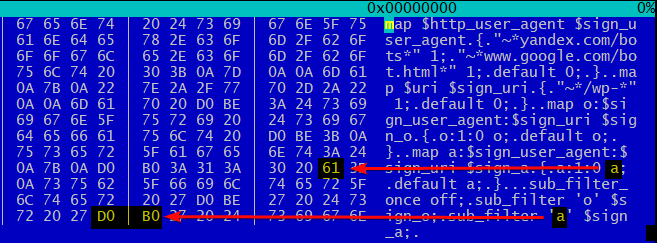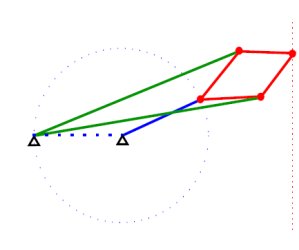Как я взломал Гитхаб еще раз
Несколько дней назад гитхаб запустил баунти программу. За 4 часа я смастерил такой URL после посещения которого я получал доступ к вашему гитхаб аккаунту и репозиториям. Хотите узнать как?
Я - автор двух пакетов, входящих более-менее во все дистрибутивы Linux: sane-airscan и ipp-usb.
Кроме того, sane-airscan входит во все основные дистрибутивы BSD (FreeBSD, NetBSD и OpenBSD) и в ChromeOS. ipp-usb в ChromeOS не взяли потому, что он написан на Go, а у них там очень жестко с размером исполняемых файлов, вместо этого они написали свое на Rust, но предпочли бы взять моё изделие, если бы могли. Совсем недавно появился порт ipp-usb на FreeBSD, вероятно, другие BSD тоже скоро подтянутся.
Вместе эти два пакета образуют стек "бездрайверного" сканирования документов для Linux и *BSD, а в перспективе нескольких лет, когда старые сканеры, наконец, вымрут, вероятно других драйверов и не останется.
Кроме того, ipp-usb делает возможным "бездрайверную" печать на USB-устройствах.
Здесь я хочу рассказать, каково оно, быть автором популярных OpenSource пакетов. Хоть эта работа и не принесла мне особых денег (на что я, впрочем, особо и не рассчитывал), она принесла мне бесценный опыт.
В целом, я полагаю, продвижение OpenSource пакетов структурно близко к продвижению на рынок программных продуктов. Занимаясь этой деятельностью, очень хорошо начинаешь понимать разницу между (1) написать программу, которая работает для меня (2) написать программу, которую можно назвать продуктом (3) вывести продукт на рынок.
Первое занимает гораздо меньше времени, чем второе. Второе - гораздо меньше времени, чем третье.
 Если и есть что-то, что веб-разработчики любят, так это знать что-то, что лучше традиционного. Но традиционное является таковым по одной причине: это дерьмо работает. Что-то давно беспокоило меня во всей этой шумихе вокруг Node.js, но у меня не было времени разобраться, что именно, пока я не прочитал полный боли в жопе пост от Райана Дала, создателя Node.js. Я бы забыл его, как любое очередное нытьё какого-то осла о том, что Unix слишком сложен. Но, как полицейскому, который, жопой чуя, что что-то не так с этой семьёй в микроавтобусе, останавливает его и находит пятьдесят килограммов героина, мне показалось, что что-то не так с этой слезливой историей, и возможно, просто возможно, он понятия не имеет, что делает, и много лет программирует, никем не контролируемый.
Если и есть что-то, что веб-разработчики любят, так это знать что-то, что лучше традиционного. Но традиционное является таковым по одной причине: это дерьмо работает. Что-то давно беспокоило меня во всей этой шумихе вокруг Node.js, но у меня не было времени разобраться, что именно, пока я не прочитал полный боли в жопе пост от Райана Дала, создателя Node.js. Я бы забыл его, как любое очередное нытьё какого-то осла о том, что Unix слишком сложен. Но, как полицейскому, который, жопой чуя, что что-то не так с этой семьёй в микроавтобусе, останавливает его и находит пятьдесят килограммов героина, мне показалось, что что-то не так с этой слезливой историей, и возможно, просто возможно, он понятия не имеет, что делает, и много лет программирует, никем не контролируемый.
Привет, Хабр! Меня зовут Иван Глинкин, я занимаюсь инфраструктурным тестированием и аппаратным хакингом в Бастионе. Недавно наткнулся на интересное предложение на российских маркетплейсах — роутеры с предустановленным «пожизненным» VPN. Звучит заманчиво: купил, включил и сразу получаешь безлимитный доступ к виртуальной частной сети, причем без подписки.
Но как говорится, бесплатный сыр бывает только в мышеловке. Я решил разобраться, что на самом деле скрывается за красивыми обещаниями продавцов. Приобрел три роутера из разных ценовых категорий — от бюджетного Cudy за 3000 рублей до топового Xiaomi за 7000. Спойлер: если вы ожидали хеппи-энд, то вы зашли не в тот блог.
В процессе исследования обнаружил несегментированные сети, где можно получить доступ к устройствам других покупателей, пароли admin:admin, хранящиеся в открытом виде, и SSH-доступ для продавцов. А еще выяснил, что «пожизненные» серверы работают на дешевом хостинге за 2,5 доллара.
В этой статье расскажу, какие угрозы скрываются за яркой рекламой и почему экономия на сетевой безопасности может обойтись слишком дорого.


Рейтинг= (Число положительных оценок) - (Число отрицательных оценок)
TL;DR После установки Яндекс.Браузера с опцией отправки статистики, слишком много данных, на мой взгляд, отправляется куда-то в недра api.browser.yandex.ru. С помощью коллеги по цеху ИБ – Олега Анциферова – удалось раскопать следующее: улетает список пользователей, список установленного ПО, файл hosts и т.д. Под катом подробности.

Улучшение Том и Джерри из 480p в 1440p
С чего всё началось? Как-то я решил в третий раз с детства пересмотреть всю оригинальную коллекцию "Том и Джерри", но я, в отличие от маленького ребёнка, не потребляю любой контент вне зависимости от его качества. И вот я собрался посмотреть самую доступную версию, а там вот это цветошоу с постоянными царапинами на всём экране.




Специальная теория относительности - удивительная теория, которая опровергла многие представления о мире, в которых человечество не сомневалось всю историю своего существования.
Многие слышали про волшебства вроде замедления времени, сокращения длины, относительности одновременности, парадокса близнецов и т.д., но мало кто понимает почему так происходит.
В этой статье я хочу наглядно показать, что все это проще, чем кажется на первый взгляд.
Для иллюстраций я написал интерактивный визуализатор СТО, работающий в браузере. Ссылка на него и исходники проекта в конце статьи.




Блуждая по Хабру, я всё чаще слышу один и тот же рефрен: «Хабр уже не тот». Статьи не набирают, интерес аудитории угас, а в кулуарах DevRel'ы жалуются, что «продвигаться стало невозможно». Но так ли это на самом деле? Или это классическая «раньше трава была зеленее»?